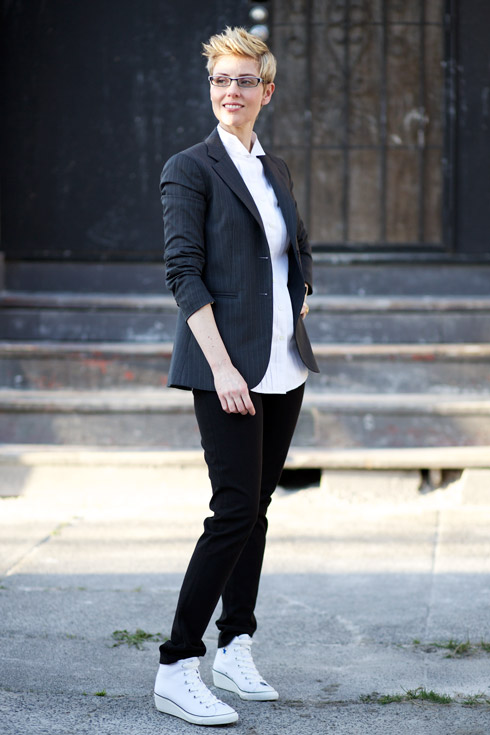Often the best outfit inspirations are simply what someone else is wearing. It might be something you see in a magazine or catalogue, in the blogosphere, on pinterest, or in the flesh on a stranger or friend. On the YLF forum this is referred to as a copycat outfit, and I view it as one of four main starting points for outfit creation.
Copycat outfit creation is not as simple as you might think. Seldom is the person wearing the outfit an exact match to your complexion, body type, lifestyle, or style persona. Furthermore, you may be drawn to some aspects of the outfit, but not to the look from head to toe. So the challenge lies not only in distilling the essence of the outfit, but also in adapting and substituting to make it work for you.
In fact, it is this three step process to copycat outfit creation that I use when I’m working with clients, or putting together my own copycat looks. Distill, adapt and substitute. In this post I’m going to use one of my outfits as an example: my version of white shirt, sneakers and blazer, which was inspired by an outfit I pinned to my street style board on Pinterest.
Distill
Identify the essence of the outfit that inspired you to copy it. In this case I was drawn to the concept of wearing a strict suit blazer with high-top Converse sneakers. I loved the monotone and androgynous vibe of the outfit, and its lack of jewellery. I also liked the bright white parts of the shirt which are repeated in the footwear. Grey is not my best colour, but wearing it with bright white makes it work better against my complexion.
Adapt
Aspects of this outfit are not suited to my style persona. First, layering a pullover over a shirt is not a combination I like to sport these days. Too much visible layering for my tastes. I either want to wear a shirt OR pullover under a blazer, but not both. I also don’t wear super tight skinnies unless I’m tucking them into tall boots. Plus my style is Polished and not RATE (Rough Around The Edges), so I needed to add back in the crisp simplicity that makes my outfits feel like me.
Finally, I am not as tall and willowy as the wearer, which means that I need to wear a shorter blazer to keep proportions flattering.
Substitute
Once I figured out what I loved about the outfit, as well as the parts that were less appealing, I could begin putting my look together. By substituting parts of the outfit with other pieces, I was able to create a similar vibe that reflected my style preferences. I also shopped my closet during this process, which meant choosing pieces that are similar instead of exactly the same.
- I substituted the solid grey blazer with a grey pinstripe. To keep things simple and minimal, I scrunched the sleeves instead of rolling them because I did not want to expose the cream contrast lining of my blazer. That would have added another point of interest to the outfit, making it more maximal.
- Instead of the basic white button-down shirt, I chose a white tuxedo shirt for extra outfit interest because I was losing the layered effect of the pullover.
- I substituted super tight skinnies with straight leg black cigarette pants, because I prefer a slightly roomier fit in my bottoms.
- My Converse high-tops are white, unlike the grey ones in the original outfit. Close enough, and also more crisp and to my taste.
- I love a pop of colour and always carry a handbag, so I added in a sporty neon clutch to complement the sneakers.
- I finished of the outfit with watch, wedding ring and specs like I do with every outfit.
The end result is an outfit quite similar to the one I copied, but not a carbon copy.


It’s important to think laterally when taking the copycat approach to outfit creation. The point is not to look exactly like the wearer of the original outfit, but to take inspiration from it. Capture its strengths, and make it even stronger by working within the parameters of your body type, lifestyle and style persona.










